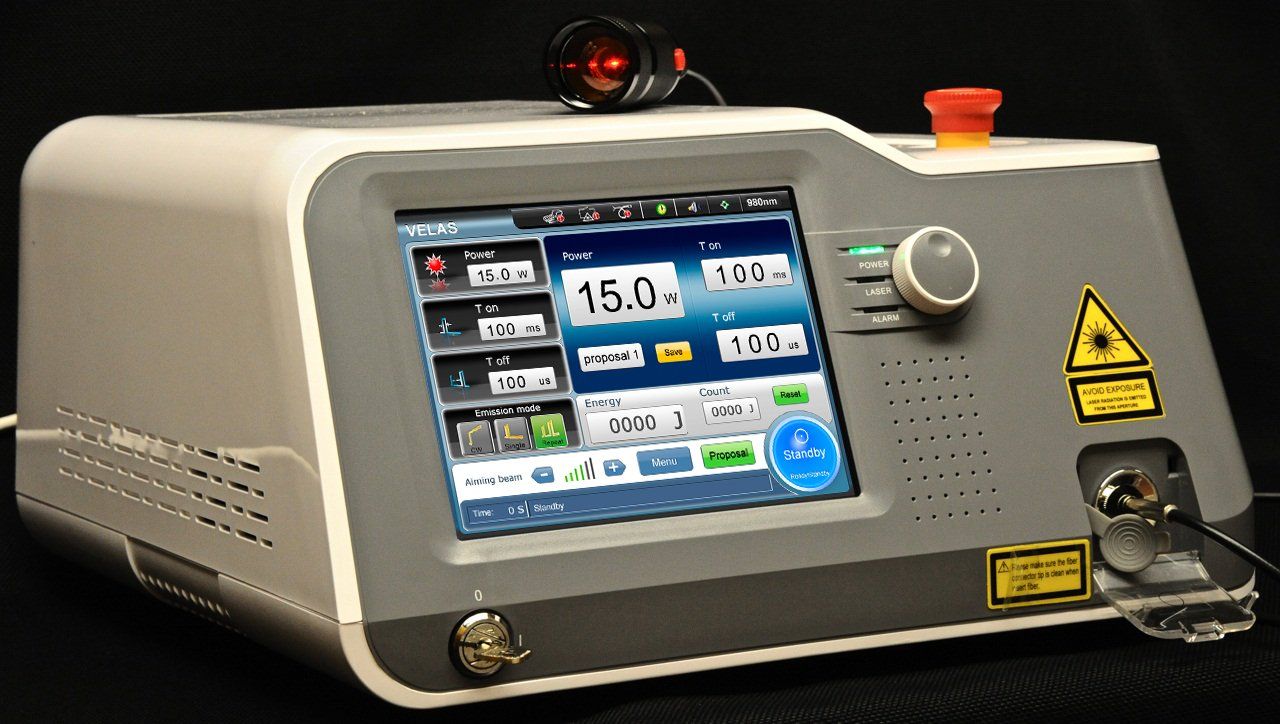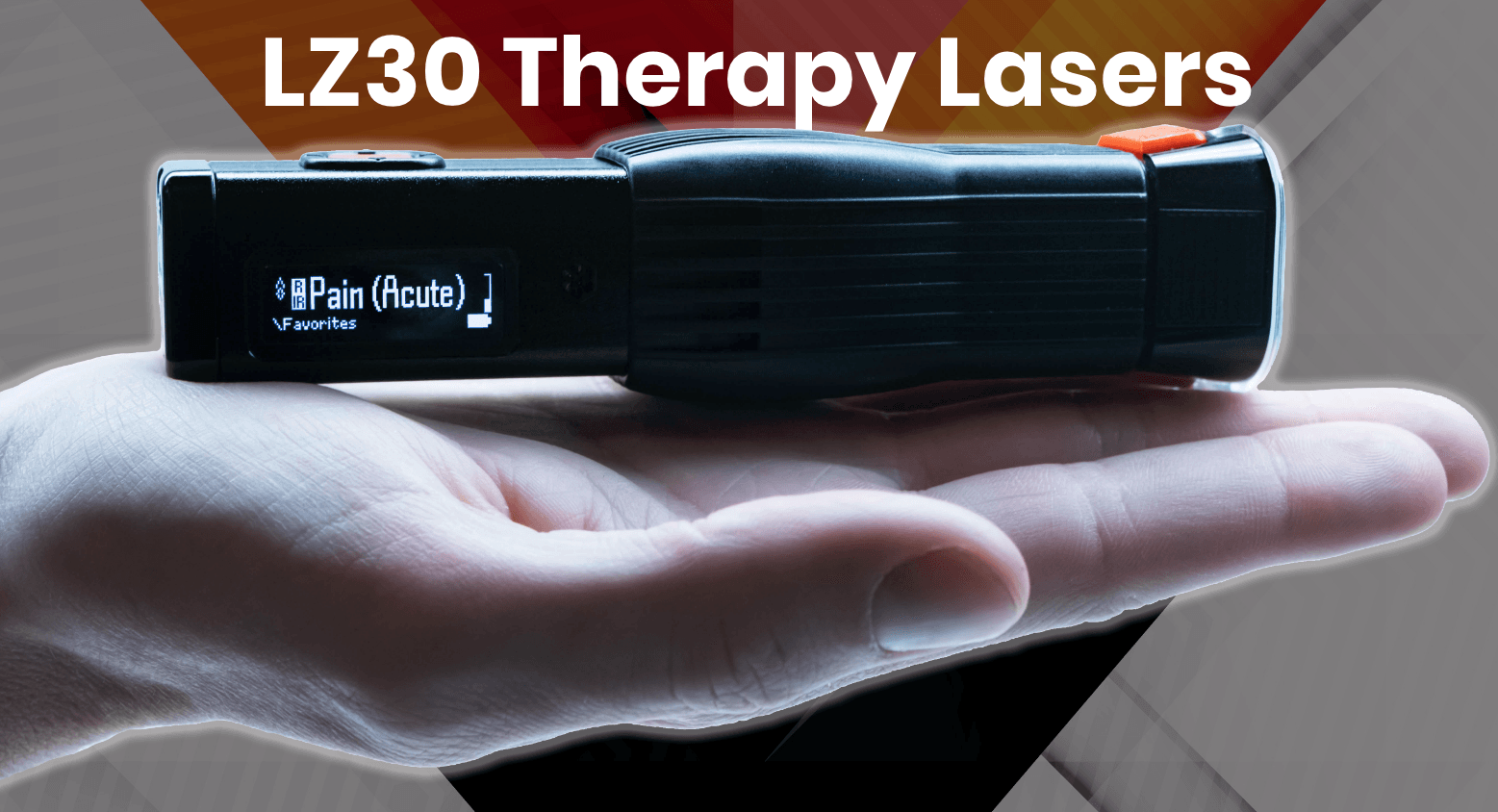Ca++, Na+ and K+ concentrations, as well as the proton gradient over the mitochondrial membrane are positively influenced. This is accomplished in part, by the production of beneficial Reactive Oxygen Species aka (ROS). These ROS’s modulate intracellular Ca++ concentrations and laser therapy improves Ca++ uptake in the mitochondria.
2.
Enhancement of ATP production and synthesis:
ATP production and synthesis are significantly enhanced, contributing to cellular repair, reproduction and functional ability. Photonic stimulation of Cytochrome c Oxidase, a chromophore found on the mitochondria of cells, plays a major role in this rapid increase in production and synthesis of ATP.
3.
Stimulation of vasodilation:
Vasodilation is stimulated via an increase in Histamine, Nitric Oxide (NO) and Serotonin levels, resulting in reduction of ischemia and improved perfusion. Laser-mediated vasodilation enhances the transport of nutrients and oxygen to the damaged cells and facilitates repair and removal of cellular debris.
4. Acceleration of leukocyte activity:
Beneficial acceleration of leukocytic activity, resulting in enhanced removal of non-viable cellular and tissue components. Thus allowing for a more rapid repair and regeneration process.
5. Increased prostaglandin synthesis:
Prostaglandins have a vasodilating and anti-inflammatory action.
6. Reduction in interleukin 1:
Laser irradiation has a reducing effect on this pro-inflammatory cytokine that has been implicated in the pathogenesis of rheumatoid arthritis and other inflammatory conditions.
7. Enhanced lymphocyte response:
In addition to increasing the number of lymphocytes, laser irradiation mediates the action of both lymphatic helper T-cells and suppressor T-cells in the inflammatory response. Along with laser modification of beta cell activity, the entire lymphatic response is beneficially affected by laser therapy.
8. Increased angiogenesis:
Both blood capillaries and lymphatic capillaries have been clinically documented to undergo significant increase and regeneration in the presence of laser irradiation.
9. Temperature modulation:
Areas of inflammation typically demonstrate temperature variations, with the inflamed portion having an elevated temperature. Laser therapy has been shown to accelerate temperature normalization, demonstrating a beneficial influence on the inflammatory process.
10. Enhanced superoxide dismutase (SOD) levels:
Laser stimulated increases in cytokine SOD levels interact with other anti-inflammatory processes to accelerate the termination of the inflammatory process.
11. Decreased C-reactive protein :
Laser therapy has been shown to lower the serum levels of these inflammation markers, particularly in rheumatoid arthritis patients.
Check out the links below to medical studies supporting the use of Lasers:
https://www.ncbi.nlm.nih.gov/pubmed/22169831
https://www.ncbi.nlm.nih.gov/pubmed/23093133
https://www.ncbi.nlm.nih.gov/pubmed/12210592
There are a endless number of studies to support the use of lasers for pain, in fact over 2000! Both class 3 and class 4 are effective if used properly by a trained technician that specializes in laser therapy and not just a clinic that wants to see how much more money they can make by adding a laser to their practice.
The Primary Difference between class 3b and 4 Lasers
Therapy lasers have been used and researched extensively in Europe for more than 30 years. However, the United States Food and Drug Administration (FDA) only cleared a low level laser in 2002, and the first class IV therapy laser in 2003. Low Level Laser Therapy (LLLT) and it’s known effects have already been reviewed extensively in this journal. The most important clinical and therapeutic difference between Class IV Laser therapy and LLLT is that the Class IV is able to produce a primary bio-stimulative effect on deeper tissues than lower powered lasers— while also producing substantial secondary and tertiary effects. The FDA approved indications for use of Class IV laser include the following:
relief of muscle and joint aches, pain and stiffness;
relaxation of muscles and muscle spasms;
temporary increase in local blood circulation; and
relief of pain and stiffness associated with arthritis.
Conclusion
Therapy lasers have been an exciting addition to the health care treatment arsenal. The development of Class IV therapy lasers represents the next generation of light therapy. By maximizing the primary effects, Class IV therapy lasers are able to induce extremely rapid clinical responses.



